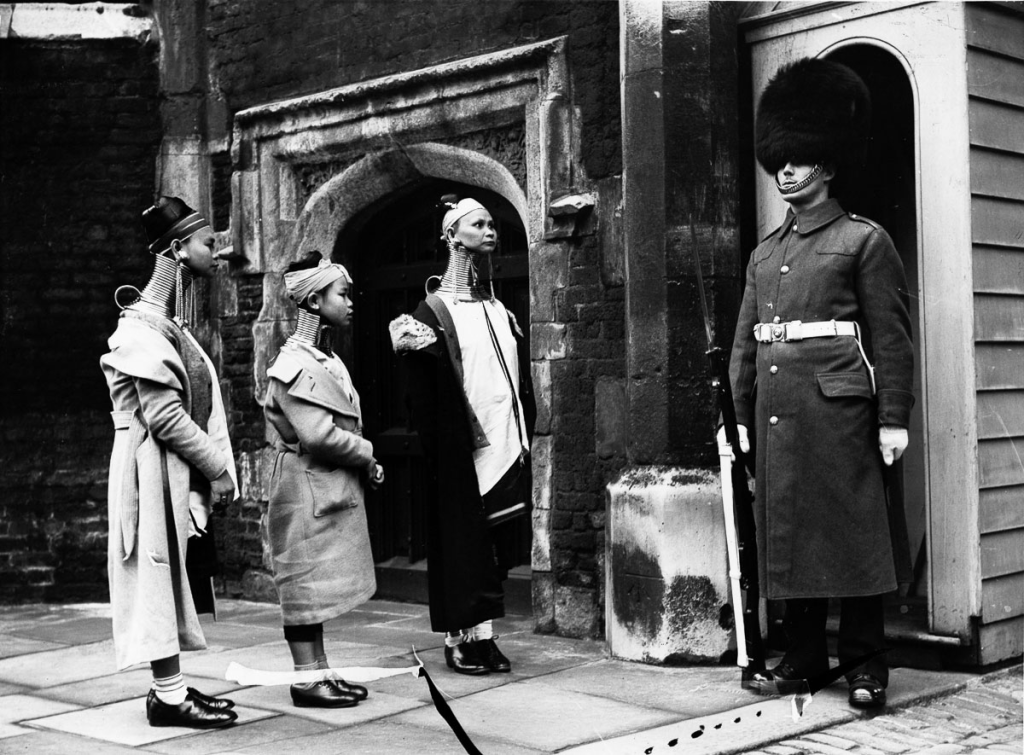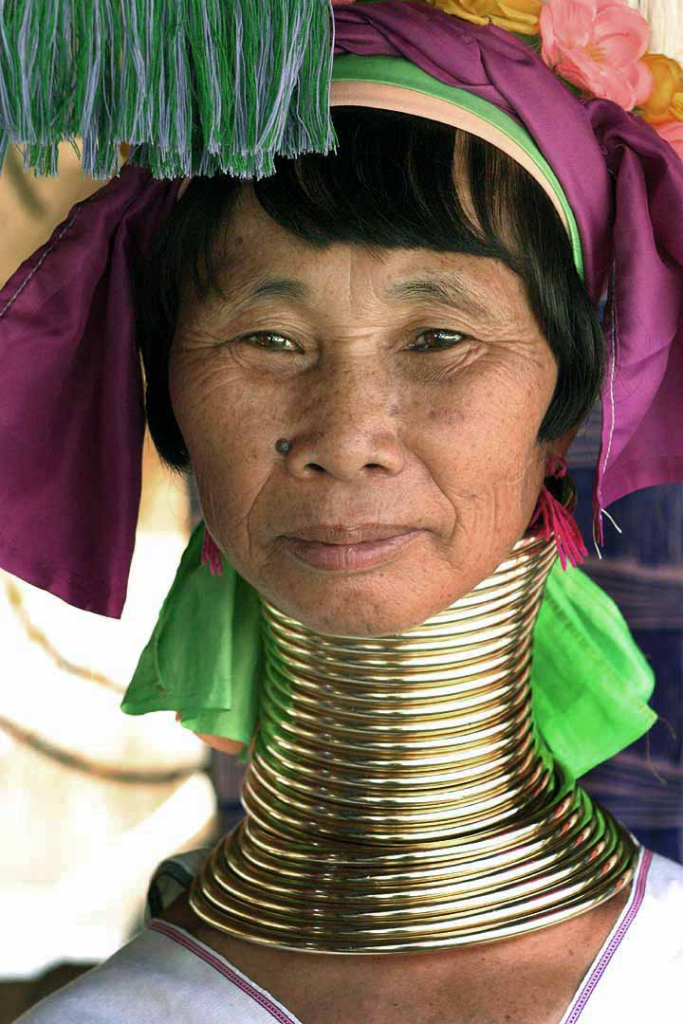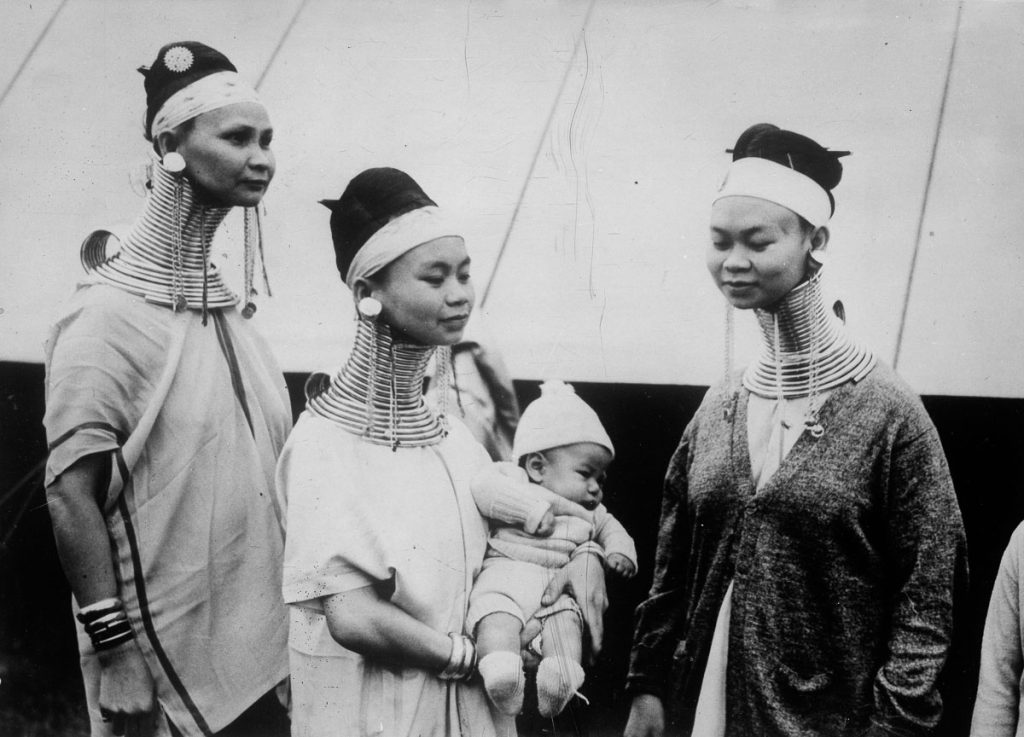Giraffe Women aka the Kayan Lahwi People: Tradition and Cultural Identity
The Kayan Lahwi people, also known as Padaung, are an ethnic group residing in Myanmar (Burma) and Thailand and popuplar with their giraffe women. Among their notable customs, Padaung women are renowned for wearing neck rings, which are brass coils placed around their necks, creating an illusion of elongation. This practice has intrigued many throughout history, and it continues to captivate people’s attention even today.
The Culture of the Kayan Lawhhi People
The Kayan Lahwi people, also known as the Padaung tribe, are an ethnic group indigenous to Myanmar. They primarily reside in the Kayah State, a region in the eastern part of the country. With a population of around 30,000, the Kayan Lahwi people have managed to preserve their unique cultural identity despite the challenges posed by modernization.
Traditional Dwellings: Simplicity and Harmony
The Kayan Lahwi people traditionally live in longhouses made of bamboo and thatch. These communal dwellings are designed to accommodate multiple families, promoting a sense of unity and cooperation within the community. The longhouses, adorned with intricate carvings and vibrant decorations, reflect the artistic sensibilities of the Kayan Lahwi people.
Agricultural Heritage: Living in Harmony with Nature
Agriculture forms the backbone of the Kayan Lahwi community. The fertile lands surrounding their villages are used for cultivating rice, corn, vegetables, and other crops. The Kayan Lahwi people have a deep respect for nature and practice sustainable farming methods, maintaining a harmonious relationship with the environment.
Traditional Clothing: A Tapestry of Colors and Patterns
The traditional attire of the Kayan Lahwi people is a reflection of their rich cultural heritage. Both men and women wear woven garments adorned with intricate patterns and vibrant colors. The giraffe women’s attire is particularly distinctive, featuring a long dress known as a “longyi” and an embroidered blouse called a “khaung pao.”
The Fascination of Giraffe Women in the 1930s

In 1935, a group of Padaung women visited London, where they became star attractions. During the 1930s, circuses and shows were immensely popular in the United Kingdom, and the women, advertised as “giraffe women,” drew huge crowds. This set of photographs showcases their visit and provides a glimpse into the fascination they generated.
The Neck Rings Tradition and Giraffe Women

The most distinctive custom of the Padaung culture involves winding spirals of brass around the necks of young girls. This process begins around the age of five and is performed by a bedinsayah, a spirit doctor, on an auspicious day determined through divination. Initially, a four-inch (10 cm) coil is placed, and every two years, another coil is added. The coiling continues sporadically until a limit of 21-25 coils is reached, typically at the age of marriage.
Symbolism and Identity: The Neck Rings as Cultural Markers
For the Kayan Lahwi people, the neck rings are more than mere adornments; they symbolize cultural identity and ethnic pride. The tradition of wearing neck rings has been passed down through generations, serving as a distinct marker of Kayan Lahwi women. The number of coils worn by a woman signifies her beauty, grace, and social status within the community.
Challenges and Controversies
In recent years, the practice of wearing neck rings has faced criticism and controversy from international observers. Some argue that it perpetuates harmful stereotypes and objectifies women. However, it is essential to approach this topic with cultural sensitivity and respect for the Kayan Lahwi people’s autonomy in preserving their traditions.
The Illusion of a Stretched Neck of the Giraffe Women
Contrary to popular belief, the neck itself is not lengthened by the coils. The illusion of a stretched neck is created by the deformation of the chest and shoulders. The weight of the brass pushes down the collarbones and compresses the rib cage, resulting in a distorted chest and sloping shoulders. The coils, which can reach a foot in height (30 cm) and weigh 20 pounds (9 kg), have a profound impact on the woman’s physical appearance.
The Significance and Symbolism of Neck Rings of the Giraffe Women

The purpose of wearing neck rings has been a subject of speculation and interpretation. Anthropologists have suggested various theories, including the rings serving as a means of protection against enslavement by making the women less attractive to other tribes. Some believe that the coils enhance sexual dimorphism, accentuating the slender necks that giraffe women naturally possess. Additionally, the coils have been associated with the dragon figure in Kayan folklore, adding a mythical element to their cultural significance.
Exploring Possible Meanings
The coils may symbolize protection from tiger bites, both literally and symbolically. Although the exact purpose remains a subject of debate, many Kayan women assert that the rings serve as a reflection of their cultural identity and are associated with beauty. The significance attributed to the coils has evolved over time, and today, some Padaung women have chosen to break with tradition. However, a few older women and younger girls in remote villages continue to embrace this unique practice.


